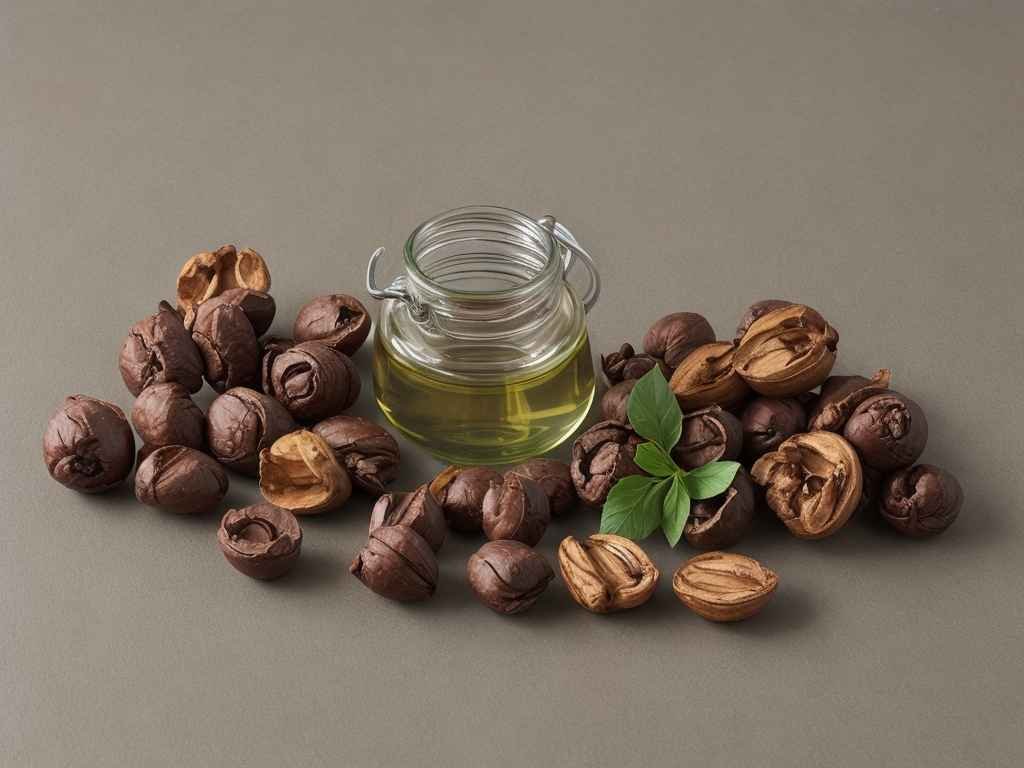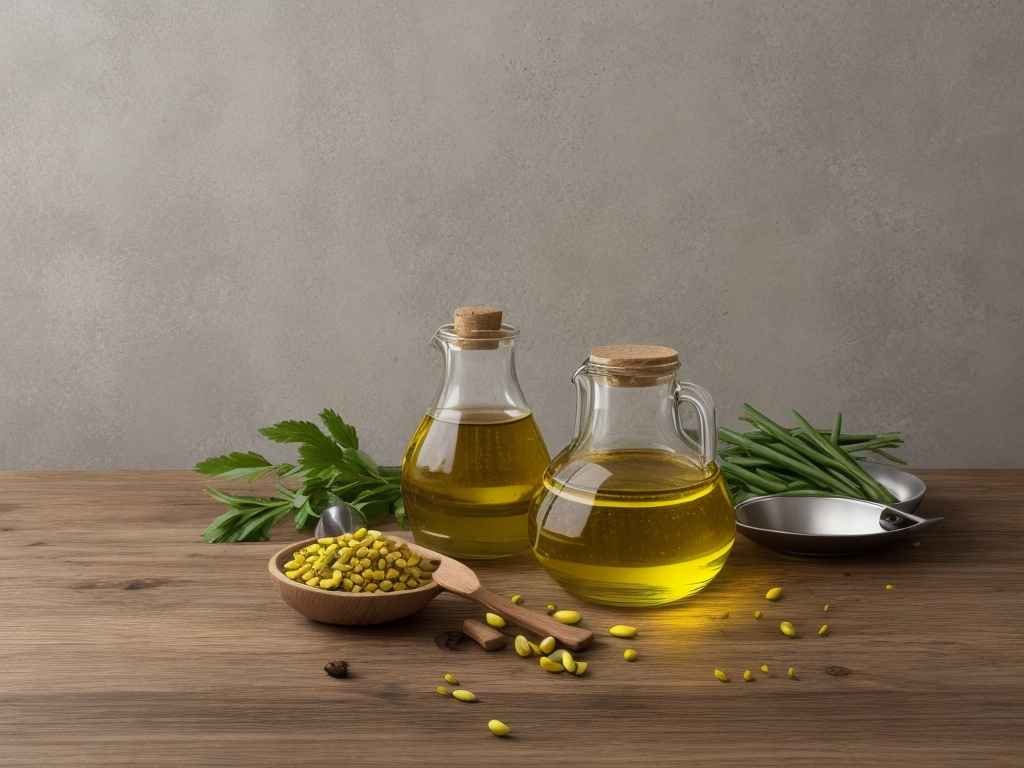When it comes to tasty foods, walnut oil stands out because of its enticing nutty flavor that takes dishes to a whole new level. But beyond its taste, there is an important fact that every chef and home cook should know: the smoke point. Knowing the walnut oil smoke point is like knowing how to use a well-trained chef’s knife—it lets you follow recipes with accuracy and finesse, making sure that the flavors go well together without the unpleasant taste of burnt oil getting in the way.
This guide will help you understand walnut oil better. You can use it in many ways in the kitchen, from light drizzles to thick dressings. It is also thought to have many health benefits that make it not only a food staple but also a nutritional ally.
What is Walnut oil Smoke Point?
If walnut oil has been processed or not, the walnut oil smoke point will be different. With a lower smoke point of about 320°F (160°C), unrefined walnut oil has a rich taste and is good for you. This makes it great for adding to salads or dips where it doesn’t need to be heated up much. Smooth walnut oil, on the other hand, has been changed so that it has a higher smoke point, around 400°F (204°C). Because of this, it works better for cooking at medium temperatures, like when you sauté or bake.
But refining can take away some of the healthy nutrients and natural flavors that are in unprocessed walnut oil. This means that cooking at higher temperatures is a trade-off between keeping the flavors and keeping the nutrients.
Explore: Walnut oil for weight loss : Slim Down Naturally
| Aspect | Unrefined Walnut Oil | Refined Walnut Oil |
|---|---|---|
| Smoke Point | 320°F (160°C) | 400°F (204°C) |
| Extraction Method | Cold-pressed | Refined |
| Flavor | Rich, nutty | Mild |
| Nutritional Content | High (retains more nutrients) | Moderate (some nutrients lost) |
| Best Uses | Cold applications, dressings, dips, finishing oil | Sautéing, baking, light frying |
| Health Benefits | Omega-3 fatty acids, antioxidants, polyunsaturated fats | Omega-3 fatty acids, antioxidants, polyunsaturated fats |
| Storage | Cool, dark place, refrigeration recommended | Cool, dark place |
| Shelf Life | Shorter, use within a few months | Longer |
| Examples of Cold Applications | Salad dressings, dips, sauces, drizzled over vegetables | N/A |
| Examples of Cooking Applications | N/A | Light sautéing, baking, light frying |
| Comparison with Other Oils | Lower smoke point than olive oil, similar to flaxseed and wheat germ oil | Higher smoke point than unrefined walnut oil |

Why Walnut Oil Smoke Point Matters?
Nutritional Impact: Heating walnut oil beyond its smoke point isn’t just a matter of taste—it’s about preserving its nutritional integrity. This liquid gold is packed with omega-3 fatty acids and antioxidants, vital for heart health and overall well-being. However, subjecting it to high temperatures can degrade these precious nutrients, robbing your dish of its healthful benefits.
Flavor Preservation: Imagine a dish where every ingredient sings in perfect harmony. Walnut oil, with its distinctive nutty notes, plays a crucial role in achieving culinary symphony. To keep its flavor pristine, it’s wise to treat walnut oil with care. Use it in cold dishes like salads or drizzle it over pasta just before serving. Applying heat beyond its smoke point risks turning this sweet harmony bitter—a culinary misstep that could overshadow an otherwise delightful experience.
Culinary Uses of Walnut Oil
Cold Applications:
Walnut oil shines in cold dishes, particularly in Salad Dressings where its robust flavor serves as a perfect complement to leafy greens, fruits, and nuts. Its nutty essence adds depth and character to vinaigrettes, elevating even the simplest of salads to gourmet status.
For Dips and Sauces, walnut oil offers a delightful base. Blend it with fresh herbs, garlic, and a splash of lemon juice for a versatile dipping sauce that’s both vibrant and savory. Its smooth texture and rich taste make it an ideal partner for bread, vegetables, or as a marinade for meats.
As a Finishing Oil, walnut oil adds a final touch of sophistication to various dishes. Drizzle it over cooked vegetables to intensify their natural flavors or use it as a finishing touch for pasta dishes, imparting a subtle nuttiness that enhances every bite. It can even be swirled into soups and stews just before serving, enriching them with its distinctive taste.
Explore: Can you bake with walnut oil ?
Cooking Applications:
When it comes to Sautéing, refined walnut oil steps up with its higher smoke point, allowing for light sautéing at moderate temperatures. This makes it suitable for gently cooking vegetables, seafood, or chicken without overpowering their flavors.
In Baking, walnut oil lends a subtle nutty undertone that elevates baked goods to a new level. Incorporate it into cakes, cookies, muffins, or even bread for a hint of richness that complements both sweet and savory recipes alike.
For Light Frying, refined walnut oil can be used judiciously. While it’s not intended for deep frying due to its delicate flavors, it can handle light frying tasks such as pan-frying fish or lightly browning vegetables. Its unique flavor adds a distinctive touch to fried dishes, offering a delicious alternative to traditional cooking oils.
Explore: Can we use walnut oil for frying?
Innovative Uses of Walnut Oil
Looking to elevate your culinary repertoire? Consider these innovative ways to incorporate walnut oil:
In Smoothies: Transform your morning routine by adding a spoonful of walnut oil to your smoothies. Not only does it impart a subtle nutty flavor, but it also boosts the omega-3 fatty acid content, promoting heart health and overall well-being. Blend it with fruits, greens, and your favorite protein for a delicious and nutritious start to your day.
As a Marinade: Explore the rich flavors of walnut oil as a base for marinades. Its distinctive nuttiness pairs beautifully with herbs, spices, and citrus, infusing meats and vegetables with depth and complexity. Whether you’re grilling chicken, marinating vegetables for a barbecue, or preparing tofu for a stir-fry, walnut oil adds a unique twist that enhances every dish. Allow your ingredients to soak up the flavors for an hour or more before cooking to maximize the infusion of flavors. Embrace the versatility of walnut oil to transform ordinary meals into extraordinary culinary experiences.

Common Misconceptions about Walnut Oil
As versatile as walnut oil is, there are a few misconceptions that need clarification:
Cooking at High Heat: One common belief is that walnut oil can withstand all cooking methods. While it’s true that refined walnut oil has a higher smoke point, making it suitable for moderate sautéing and light frying, it’s not meant for high-heat cooking such as deep frying. Its lower smoke point means it can break down and produce undesirable flavors if subjected to excessive heat, detracting from its natural richness and aroma.
Nutritional Loss: Another misconception is related to the impact of heating on walnut oil’s nutritional value. Some assume that heating walnut oil doesn’t affect its beneficial nutrients. However, omega-3 fatty acids and antioxidants found in walnut oil are sensitive to heat. Cooking at high temperatures can degrade these compounds, diminishing the oil’s health benefits. To preserve its nutritional integrity, it’s best to use walnut oil in cold dishes or as a finishing oil in cooked dishes rather than subjecting it to prolonged or high-heat cooking methods.
Substitution in Cooking: Some individuals believe that walnut oil can be used interchangeably with other cooking oils without considering its distinct flavor profile. While walnut oil can add a delightful nutty taste to dishes, substituting it directly for neutral oils like vegetable or canola oil may alter the intended flavor of the dish. It’s best used in recipes that complement or highlight its unique flavor, such as salads, dips, and certain baked goods.
Conclusion
Walnut oil is a nutritious and flavorful addition to any kitchen. By understanding walnut oil smoke point and proper uses, you can make the most of this versatile oil. Whether you’re using it in cold dishes, baking, or light cooking, walnut oil provides a unique taste and numerous health benefits. So next time you’re in the kitchen, consider reaching for walnut oil to enhance your culinary creations.
FAQs
1.How should walnut oil be stored?
Walnut oil should be stored with care to maintain its quality and prevent premature spoilage. Due to its high unsaturated fat content, which makes it prone to oxidation, it is best stored in a cool, dark place. Ideally, keep it in the refrigerator where the temperature remains stable and low, minimizing exposure to light and heat. Ensure the bottle is tightly sealed after each use to prevent air from entering and accelerating the oxidation process. Proper storage not only preserves the freshness of walnut oil but also extends its shelf life, allowing you to enjoy its delicate flavors and nutritional benefits for longer.
2.What are the benefits of using walnut oil?
Using walnut oil in cooking has several benefits beyond its nutty taste. First, walnut oil is rich in omega-3 fatty acids, including heart-healthy alpha-linolenic acid (ALA). These fatty acids lower cholesterol, inflammation, and promote cardiovascular function. Vitamin E and polyphenols in walnut oil defend against oxidative stress and improve skin health.
Cooking with walnut oil gives meals a refined nutty flavor. As a salad dressing base, vegetable finishing oil, and baked items, it adds a delicate nuttiness. Chefs and home cooks love its versatility, enabling for creativity in savory and sweet recipes. Walnut oil adds taste and improves health, making it a great addition to any kitchen.

